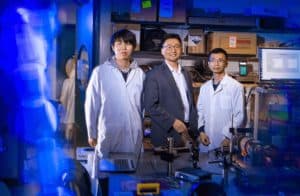
The experiment was conducted by Shenqiang Ren, a scientist and engineer from the University at Buffalo.
Lithium ions travel from one side of the battery to the other as lithium-ion batteries charge and drain. Ren’s team designed a lithium-ion battery with a peculiar substance at one end: a compound whose magnetic varies when lithium ions enter or exit it.
According to Ren, this allows for the measurement of the battery’s charge level by measuring changes in the material’s magnetic.
The findings were reported in the Proceedings of the National Academy of Sciences (PNAS) on June 13th, 2022.
The main goal of this project was working on the magneto-ionics, which uses ions to control the magnetism of materials. As the lithium ions travel in or out of the material we are using, the material will change its magnetization.
Shenqiang Ren, Professor, Mechanical and Aerospace Engineering and Chemistry, University at Buffalo
Ren added, “We can monitor the magnetism, and this enables us to indirectly monitor the lithium ions—the state of charge. We believe this is a new way to provide an accurate, fast, responsive sensing of state of charge.”
Yuguang C. Li, Ph.D., University of Buffalo associate professor of chemistry; Fei Yao, Ph.D., University of Buffalo assistant professor of materials design and innovation; and Qimin Yan, Ph.D., Temple University assistant professor of physics, are among the study’s corresponding authors.
The study’s first author was Yong Hu, a mechanical engineering Ph.D. student at the University of Buffalo.
The team’s magneto-ionic material is composed of vanadium, chromium, and cyanide, with an aqua ligand. The researchers discuss the properties of the compound that make it perfect for usage in rechargeable batteries, as well as the methods they used to measure the material’s changing magnetic in a rechargeable lithium-ion battery, in the study published in PNAS.
The initiative brought together the University of Buffalo’s School of Engineering and Applied Sciences, College of Arts and Sciences, and RENEW Institute in a joint effort.
The US Department of Energy, the US Army Research Office, and the New York State Energy Research and Development Authority supported the researchers who conducted the study.
